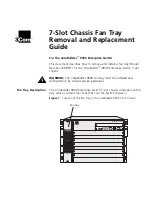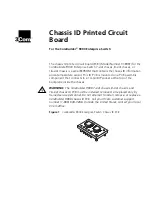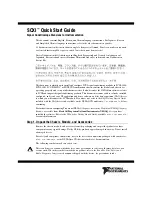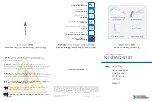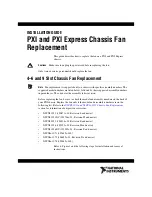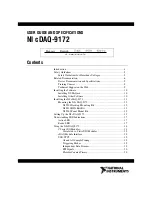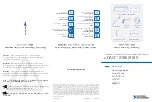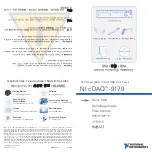
1-2
Cisco ASA Series CLI Configuration Guide
Chapter 1 Configuring Cisco Intercompany Media Engine Proxy
Information About Cisco Intercompany Media Engine Proxy
The adaptive security appliance applies its existing TLS proxy, SIP Application Layer Gateway (ALG),
and SIP verification features to the functioning of Cisco Intercompany Media Engine.
Cisco Intercompany Media Engine has the following key features:
•
Works with existing phone numbers: Cisco Intercompany Media Engine works with the phone
numbers an enterprise currently has and does not require an enterprise to learn new numbers or
change providers to use Cisco Intercompany Media Engine.
•
Works with existing IP phones: Cisco Intercompany Media Engine works with the existing IP
phones within an enterprise. However, the feature set in business-to-business calls is limited to the
capabilities of the IP phones.
•
Does not require purchasing new services: Cisco Intercompany Media Engine does not require any
new services from any service providers. Customers continue to use the PSTN connectivity they
have and the Internet connectivity they have today. Cisco Intercompany Media Engine gradually
moves calls off the PSTN and onto the Internet.
•
Provides a full Cisco Unified Communications experience: Because Cisco Intercompany Media
Engine creates inter-cluster SIP trunks between enterprises, any Unified Communication features
that work over the SIP trunk and only require a SIP trunk work with the Cisco Intercompany Media
Engine, thus providing a Unified Communication experience across enterprises.
•
Works on the Internet: Cisco Intercompany Media Engine was designed to work on the Internet. It
can also work on managed extranets.
•
Provides worldwide reach: Cisco Intercompany Media Engine can connect to any enterprise
anywhere in the world, as long as the enterprise is running Cisco Intercompany Media Engine
technology. There are no regional limitations. This is because Cisco Intercompany Media Engine
utilizes two networks that both have worldwide reach—the Internet and the PSTN.
•
Allows for unlimited scale: Cisco Intercompany Media Engine can work with any number of
enterprises.
•
Is self-learning: The system is primarily self-learning. Customers do not have to enter information
about other businesses: no phone prefixes, no IP address, no ports, no domain names, nor
certificates. Customers need to configure information about their own networks, and provide policy
information if they want to limit the scope of Cisco Intercompany Media Engine.
•
Is secure: Cisco Intercompany Media Engine is secure, utilizing a large number of different
technologies to accomplish this security.
•
Includes anti-spam: Cisco Intercompany Media Engine prevents people from setting up software on
the Internet that spams enterprises with phone calls. It provides an extremely high barrier to entry.
•
Provides for QoS management: Cisco Intercompany Media Engine provides features that help
customers manage the QoS on the Internet, such as the ability to monitor QoS of the RTP traffic in
real-time and fallback to PSTN automatically if problems arise.
How the UC-IME Works with the PSTN and the Internet
The Cisco Intercompany Media Engine utilizes two networks that both have worldwide reach—the
Internet and the PSTN. Customers continue to use the PSTN connectivity they have. The Cisco
Intercompany Media Engine gradually moves calls off the PSTN and onto the Internet. However, if QoS
problems arise, the Cisco Intercompany Media Engine Proxy monitors QoS of the RTP traffic in
real-time and fallbacks to PSTN automatically.
Summary of Contents for 5505 - ASA Firewall Edition Bundle
Page 28: ...Glossary GL 24 Cisco ASA Series CLI Configuration Guide ...
Page 61: ...P A R T 1 Getting Started with the ASA ...
Page 62: ......
Page 219: ...P A R T 2 Configuring High Availability and Scalability ...
Page 220: ......
Page 403: ...P A R T 2 Configuring Interfaces ...
Page 404: ......
Page 499: ...P A R T 2 Configuring Basic Settings ...
Page 500: ......
Page 533: ...P A R T 2 Configuring Objects and Access Lists ...
Page 534: ......
Page 601: ...P A R T 2 Configuring IP Routing ...
Page 602: ......
Page 745: ...P A R T 2 Configuring Network Address Translation ...
Page 746: ......
Page 845: ...P A R T 2 Configuring AAA Servers and the Local Database ...
Page 846: ......
Page 981: ...P A R T 2 Configuring Access Control ...
Page 982: ......
Page 1061: ...P A R T 2 Configuring Service Policies Using the Modular Policy Framework ...
Page 1062: ......
Page 1093: ...P A R T 2 Configuring Application Inspection ...
Page 1094: ......
Page 1191: ...P A R T 2 Configuring Unified Communications ...
Page 1192: ......
Page 1333: ...P A R T 2 Configuring Connection Settings and QoS ...
Page 1334: ......
Page 1379: ...P A R T 2 Configuring Advanced Network Protection ...
Page 1380: ......
Page 1475: ...P A R T 2 Configuring Modules ...
Page 1476: ......
Page 1549: ...P A R T 2 Configuring VPN ...
Page 1550: ......
Page 1965: ...P A R T 2 Configuring Logging SNMP and Smart Call Home ...
Page 1966: ......
Page 2059: ...P A R T 2 System Administration ...
Page 2060: ......
Page 2098: ...1 8 Cisco ASA Series CLI Configuration Guide Chapter 1 Troubleshooting Viewing the Coredump ...
Page 2099: ...P A R T 2 Reference ...
Page 2100: ......































